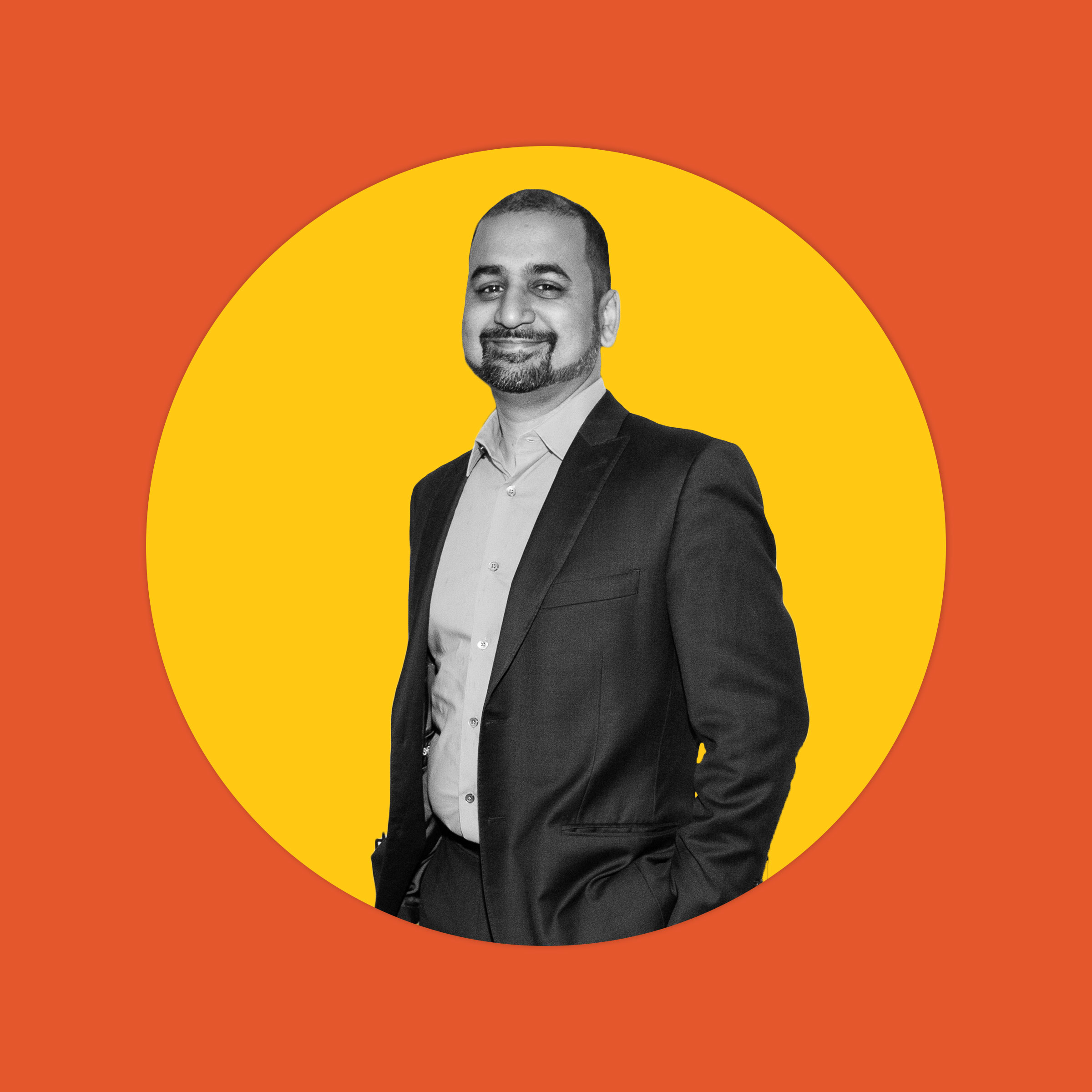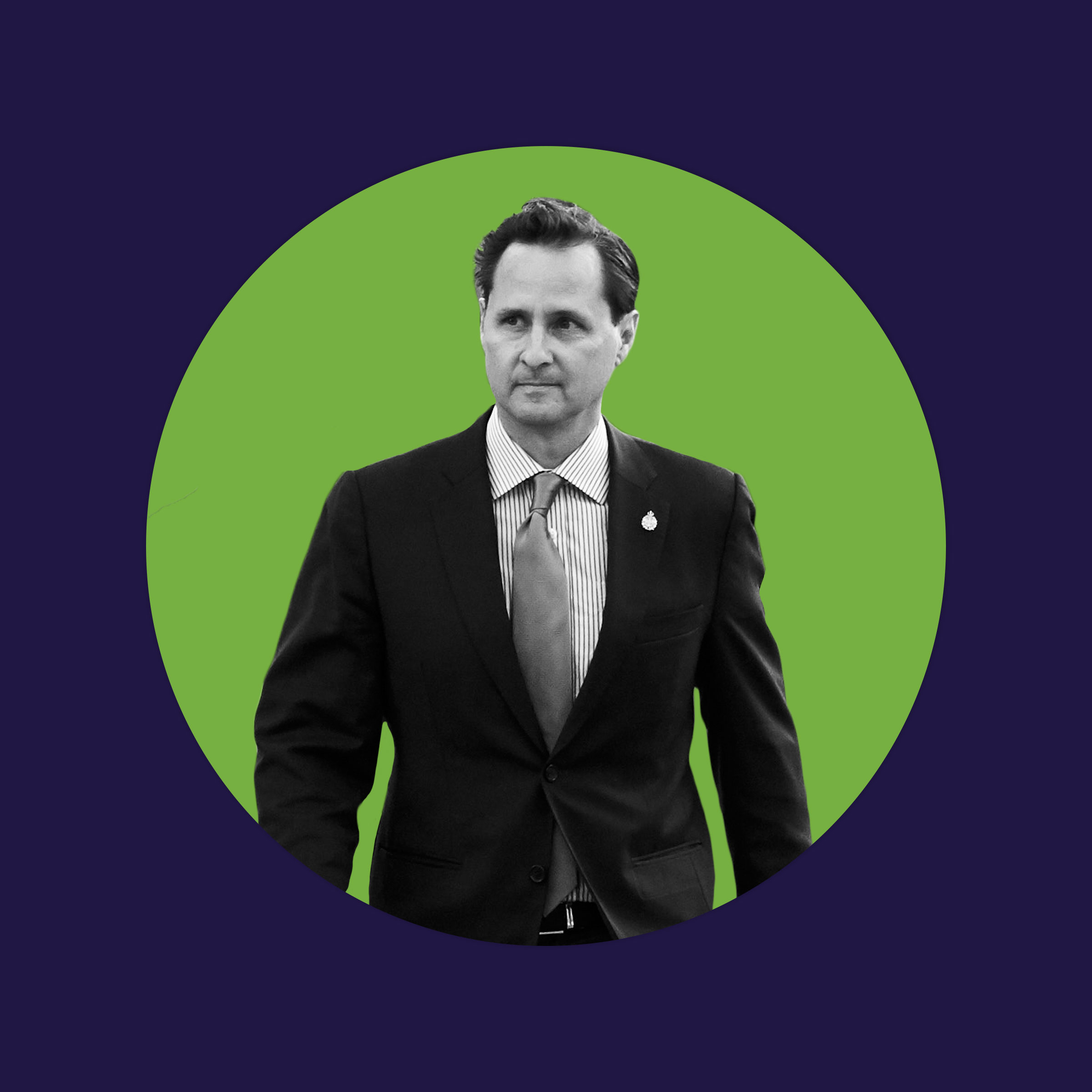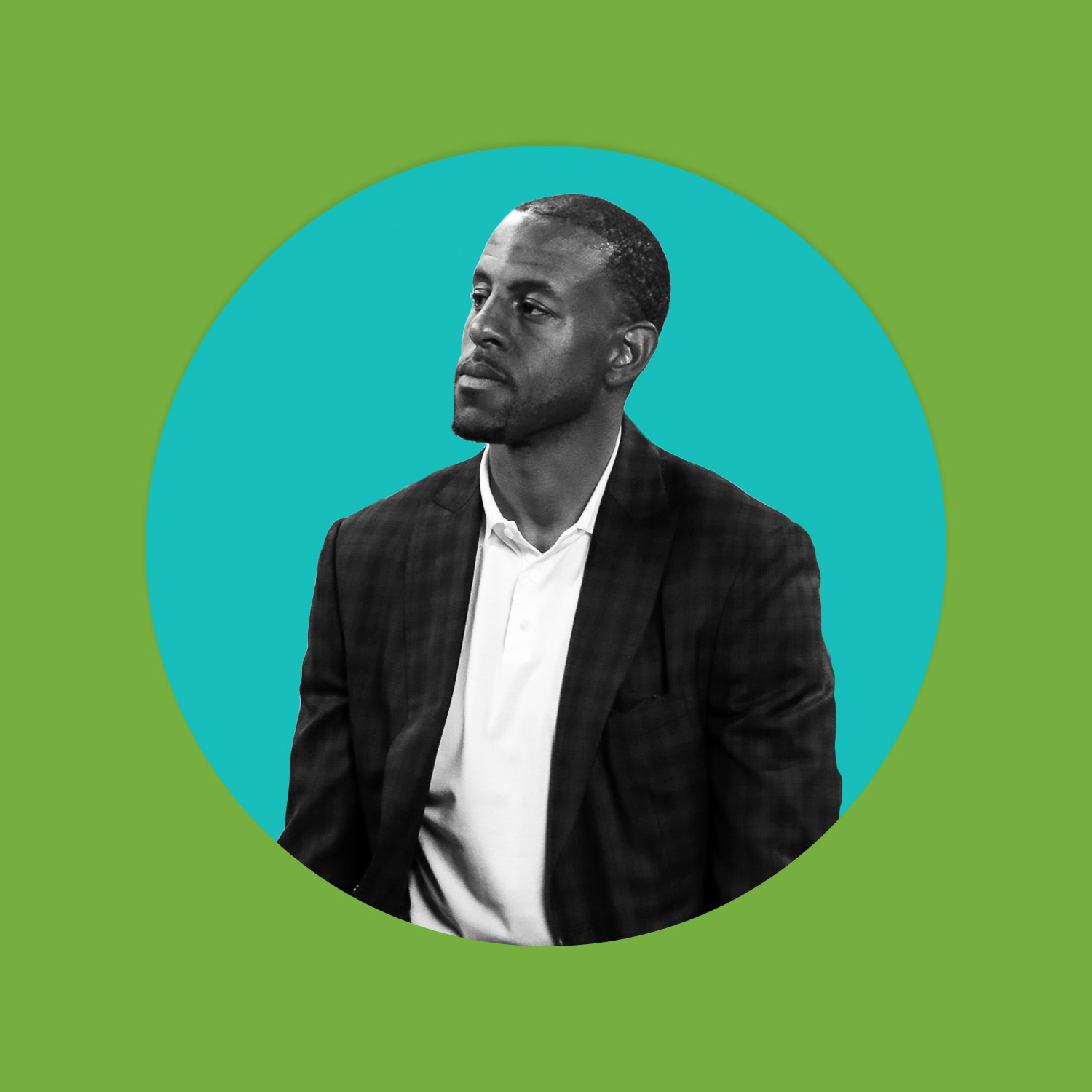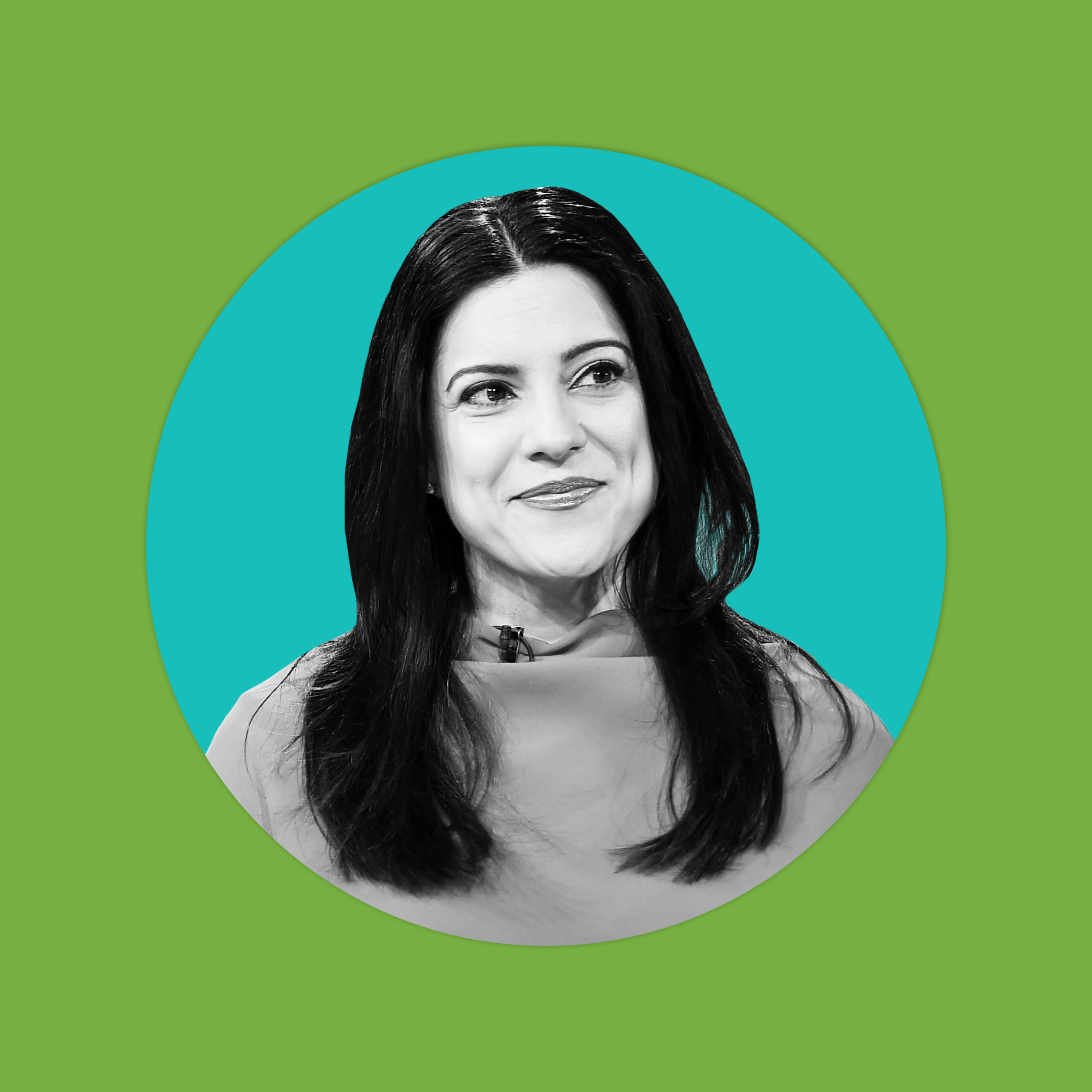
As data breaches, misuse of personal information and the spread of disinformation erode the public’s trust in Silicon Valley, it can be all too easy to become cynical about technology’s impact on the world. But there are still plenty of reasons to be optimistic about tech’s role in society moving forward.
Below, TIME speaks to 10 innovators, founders, investors and even athletes who remain upbeat about technology’s influence despite the many challenges facing the industry today.
Moustapha Cisse

Moustapha Cisse left Senegal a decade ago to study artificial intelligence, and now he believes the technology can change Africa for the better.
Cisse, 34, is leading Google’s AI research center in Accra, Ghana, the company’s first such venture in Africa. “I built my team here around people who are really committed to make a difference in people’s lives,” Cisse tells TIME. “[They] bring a fresh perspective in the field by looking at the problems that we have in Africa.”
Growing up, no one would have expected Cisse to be heading up a multi-billion dollar corporation’s research initiative. Cisse was the first member of his family to go to university, or receive formal schooling of any kind. Eventually, he traveled to France to get a master’s degree in AI and a Ph.D. in computer science, then went on to work for Facebook, developing machine learning algorithms meant to better account for society’s inherent biases.
“While I was doing all this research, I still had in the back of my mind that I wanted to come back to Africa to contribute,” Cisse says. He originally left for Europe because he couldn’t find a single program in Africa to study machine learning. But in 2018, he recruited a slate of top-tier researchers and started an AI master’s degree program at the African Institute for Mathematical Sciences in Kigali, Rwanda with funding from Facebook and Google. His program began teaching its first 30 students in September; there are plans to expand to 100 students next year, with an additional location in Accra. For Cisse, his graduates represent the future of African computing, uniquely equipped to solve the toughest challenges facing the continent — as well as bring diversity to a field concentrated in Europe, North America and Asia.
Cisse’s lab in Ghana is already starting to use machine learning to address local issues. He wants to create AI programs to help farmers diagnose blights affecting their harvests, as well as translation software to better connect speakers of Africa’s 1,000 to 2,000 languages. More broadly, Cisse believes that Africa’s technological solutions should be developed within the continent itself. “I truly believe that the types of challenges and problems we decide to solve … are informed by the environment in which we are,” Cisse says. “Being here, we have the unique opportunity to look at the problems and design solutions that fit these problems, but also ultimately will impact the whole world.”
Andy Clark

We’re all natural-born cyborgs — according to philosopher and cognitive scientist Andy Clark, anyway. He thinks humans are hardwired to incorporate outside technologies (from paper and pencils to smartphones) into our methods of thinking and acting. And as our devices get faster and smarter, so do we, he says.
Clark, who teaches cognitive psychology at the University of Sussex, believes a good deal of human cognition takes place in feedback cycles between the brain and the outside world; he calls this model “the extended mind.” “If you’re looking for the circuitry that makes human thought and reason possible, then you’ll miss a lot of the quite interesting stuff if you just look inside the brain,” says Clark, 61.
For anyone who feels helpless without their smartphone, Clark’s ideas might seem more intuitive than when he and philosopher David Chalmers introduced them in 1998. His prescient thinking has not gone unnoticed in the cognitive science world — or by today’s technology titans. In addition to his teaching and research, Clark now works as a consultant for Google, advising it on relations between humans and their devices.
What keeps Clark up at night? If our smartphones and devices form integral parts of our “extended minds,” then we might face an even more unequal future, one in which the wealthy are able to continuously upgrade their cognitive abilities with better devices, leaving the rest of us behind. “There’s enough inequality in the world already without adding new and ever-more complex layers to it,” says Clark. “There is a real issue there about making sure that it’s not totally co-opted by late capitalism.”
Despite those issues, Clark remains a “techno-optimist,” as he puts it. As the devices we interact with get smarter, he sees us inhabiting an ecosystem of continuously interacting, nearly invisible non-biological artificial intelligences.
“I think we’ll soon enter an era of what I’d dub ‘universal deep recognition,” Clark adds over email. “We’ll become used to being able to discover information about what’s around us, and how it all works and inter-relates, on demand and without typing or attending to a screen. A sub-vocal query or a haptic shortcut (a subtle motion of the hand to the ear, say) would ask ‘what bird is making that birdsong we can hear?,’ with results delivered by a hearable. A point at a salient object — say, a mushroom — would identify the type, while an augmented reality overlay could show a guess at the underground architecture of the mycelium. Hearables will be widely used for providing translations of spoken languages, too — tech that already exists.”
Still, Clark doesn’t believe that ubiquitous interaction with these artificial intelligences will make us any less human. Rather, he argues that will become more intelligent, aware versions of ourselves. “You don’t have to worry about suddenly finding yourself in some post-human future,” he says. “That’s the thing that’s most human about us … self-reinvention.”
Anil Dash

Technology’s transformative power is what Glitch CEO Anil Dash loves most. “That’s been the thing that captured my imagination from when I was a kid,” says Dash, 43, whose two decades of experience as “the tech guy in the room” for organizations like Project Include and the Obama Administration’s Office of Digital Strategy have cemented his reputation as one of the most vocal advocates for a more humane and ethical Internet.
“And then it happened,” he says, referring to what he characterizes as the rise of technology lacking an ethical compass, and the proliferation of toxicity facilitated by algorithms spreading misinformation, vitriol, and violence. The weird, creative communities that sparked Dash’s curiosity toward the web were shrinking, replaced with social networks where few seemed happy. Safe spaces for unorthodox self-expression and creation became but pockets of goodness in a larger, nastier social web more concerned with mob justice than friendly banter and learning. “It sucks to [create] in an environment where everything else is crumbling,” Dash says.
Dash is trying to preserve the web’s old-school community spirit through Glitch, where he manages a growing, collaborative community of programmers who make, share and remix apps. There are no comments or likes on Glitch. Instead, coders can ask for help on a project or thank others for their assistance. With over 1 million users, Dash is watching as both coding veterans as well as the next generation of programmers embrace a community where downvotes are out, but helping is in. And he says it’s working.
“It’s an incredibly diverse community,” says Dash of Glitch’s users. “We have kids in junior high school creating the first line of HTML they ever wrote, and we have some of the most advanced engineers at Google working on their cutting-edge artificial intelligence platforms creating demos.”
When it comes to inclusivity, Dash practices what he preaches at the company level. “I think it’s no coincidence that whatever we are as a company is what we try to be as community,” he says. “I think we’ve seen so many institutions that have been undermined by people that have no reverence for truth or consistency or decency.” At Glitch, notoriously sensitive topics like salary structure or company values are discussed openly, with every employee contribution moving the needle closer to the intended goal of workplace fairness.
All the creativity he sees on Glitch gives Dash hope that more people, including those from communities underrepresented in the technology industry, will take a chance and try to learn something new, even if they’ve never written a single line of code. “If you can trust in a community, and you can trust in your ability to express yourself, and you can trust in having a safe place to share your ideas, that gives you space to be optimistic,” says Dash. “It gives you space to have some hope to think you have something to share when the ground is shifting under you and you can’t take people at their word.”
Hugh Herr

Hugh Herr was a terrible high school student. “If you asked me what 10% of 100 was, I couldn’t tell you the answer was 10,” jokes Herr, 54. Herr’s attitude towards academia has since changed — he’s now the MIT Media Lab’s head of Biomechatronics (a field of study combining neuroscience, biology, and robotics) and one of the world’s foremost experts on and advocates for advanced prostheses.
As a teen, Herr was an obsessive rock climber. But a climbing accident in 1982 led to frostbite on both his legs, which later had to be amputated. He was then forced to confront the then-abysmal state of wood and plastic prostheses. “I thought, ‘really?'” says Herr. “This is what society has produced to emulate a missing body part? It was shocking.”
Herr’s disappointment gave way to determination, leading him to invent his own prostheses for rock climbing. From there, Hugh worked on other solutions for amputees, along the way earning degrees in mechanical engineering and biophysics from MIT and Harvard University respectively. Now, Herr gets around on cutting-edge legs of his own making called “BiOM,” which let him walk, run, and even dance with fluidity. Unlike traditional prostheses, Herr’s legs move naturally thanks to an array of sensors and microprocessors combined with a carbon fiber spring adding force to every step.
Up next for Herr? He wants to link the human body’s nervous system to artificial limbs, allowing people to better control and receive feedback from their prostheses. Herr and his team has already made progress: Herr’s friend and fellow mountain climber Jim Ewing used a feedback-capable artificial foot of Herr’s design to successfully climb the mountain where Ewing’s own life-altering injury occurred.
Thanks to advanced artificial limbs, Herr believes, the stigma of having a disability will be replaced with understanding, acceptance or even a desire for an artificial limb. “A society once said that if you’re missing a limb, your life is over,” says Herr. “Society won’t use the fact of losing an innate biological limb as a crippling influence on a person’s life. It won’t be crippling at all. It will be perhaps liberating.”
Andre Iguodala

About a dozen years ago, around the time the first iPhone was released, then-Philadelphia 76ers swingman Andre Iguodala — a huge Apple fan — read an article suggesting that if you put the money you spent on all your devices into Apple stock, you’d be able to buy the stuff by the truckload. “That hit this light switch,” he tells TIME.
Iguodala, 35, has been a tech bull ever since. He started following stocks and learning the ins and outs of the tech businesses on his own. “It was like going back to school again,” he says. When he joined the Golden State Warriors and set up shop in the Bay Area and Silicon Valley in 2013, he earned his version of an advanced degree. He’s sought out venture capitalist mentors, who are very willing to make time for professional athletes, and helped start the Players Technology Summit in 2017; the now-annual exclusive confab brings together athletes, investors and entrepreneurs. Iguodala, the 2015 NBA Finals MVP who released his autobiography The Sixth Man in June, has invested in more than 40 companies, including video conferencing company Zoom (which rwent public in April), Lime, the electric scooter outfit, and Allbirds, which designs environmentally-friendly footwear.
Optimism, Iguodala says, is in his DNA. “Coming from where I come from, not having a lot of access to certain things, when you talk about tech, it’s disruption for the better,” says Iguodala, who grew up in a working class neighborhood in Springfield, Ill. He’s expanding his tech bets, all the way to Africa. In March, Iguodala — whose father is Nigerian — joined the board of e-commerce platform Jumia, known as Africa’s Amazon. Iguodala predicts that demand for ecommerce will help build up the continent’s tech infrastructure, as well as improve connectivity, productivity, and opportunity for millions of underserved people.
The market seems to agree with him. On April 12, Jumia became the first African startup to be listed on the New York Stock Exchange. Jumia’s initial public offering (IPO) was valued at $1.3 billion; shares closed up 75% on the day. “Oh man, I was so psyched,” says Iguodala of tracking the IPO. “That just shows the growth that there is in Africa. You’re going to start seeing a lot more companies in Africa building these platforms that have had success in other places.” This offseason, the Warriors traded Iguodala to the Memphis Grizzlies; the rebuilding Grizzlies may buy out his contract, sending Iguodala on the move again (perhaps to the Los Angeles Lakers, who can benefit from Iguodala’s championship pedigree). No matter where Iguodala plays his upcoming season, he’ll keep one eye on a on the court, and another on the emerging digital world.
Katrina Lake

As some experts get increasingly pessimistic about the value of big data, others, like Katrina Lake, are exploring ways to make it more useful. The 36-year-old founder and CEO of online personal styling service Stitch Fix, Lake says the trick is to make sure her company’s data gets a human touch. “We knew from the beginning that the only way to provide accessible personal styling at scale was to combine humans and data science,” says Lake.
Stitch Fix collects customers’ measurement data and style preferences, then sends them a box full of clothes and accessories designed to fit great. Whatever they don’t like, they can send back. Lake says the company’s algorithms are great at handling data like people’s measurements, with information like skirt length, sleeve opening, and button height all factoring into finding the perfect fit. But Lake isn’t just crunching numbers; she’s dealing with humans, who might fudge their measurements by an inch or two. To make up for any fibbing, Lake says Stitch Fix’s pool of data can reveal patterns that help make sure customers get what they really need.
“We noticed that men who are 5’11” tend to round their height up to 6’ tall,” says Lake. Instead of making those men confront their aspirational verticality, or suggesting they were less than truthful, Stitch Fix used the data — along with feedback from stylists — to adjust its algorithm, providing customers with better-fitting outfits despite the incorrect measurements. “Retail is an emotional business, and the success of Stitch Fix is built on our ability to empathize,” says Lake.
Since launching in 2011, Stitch Fix has added options like maternity and plus size clothing for women, subscriptions for men, gender-neutral choices for children, and “Hybird Designs,” which are items created by Stitch Fix’s private label brands to accommodate gaps in the market, like particular styles in a slightly longer cut. That, says Lake, means everyone will be able to find something that fits them without embarrassment or frustration. “We are committed to serving everybody,” says Lake, “and believe our culture, which is rooted in diversity and inclusion, has a direct bearing on our innovation and our ability to serve everybody.” With a valuation of over $2 billion, and over 5,000 employees, Lake seems to be on the right track.
Andrew Ng

One of the world’s foremost artificial intelligence researchers, Andrew Ng isn’t alone in believing that AI will alter nearly every sector of the global economy. “Everything from agriculture to healthcare to manufacturing, these are the sectors that AI is in the process of transforming,” says Ng, 43. “I have a hard time thinking of any large industry that AI will not transform.”
Ng himself had a hand in sparking that change. In 2011, while an adjunct professor at Stanford University, Ng led the Google Brain project, which produced, among other things, an algorithm that famously taught itself to detect cats in YouTube videos (groundbreaking AI projects often seem silly on the surface but carry greater significance in the big picture.) The initiative ultimately helped take modern AI from the realm of academic research to the business world. “The basic lessons about [machine learning] and scalability we learned then are now also widely applied across the industry,” says Ng.
Ng acknowledges that AI presents unanswered problems, like its potential to centralize knowledge and wealth among those who can understand or afford its powers. But he believes that the benefits — like generating economic growth to revealing new ways to address climate change — will far outweigh the downsides. “AI is an incredibly powerful technology, and like any technology it can be used for a variety of purposes, some beneficial, and some less so,” says Ng. “Fortunately the AI community is, for the most part, focused on applying it to the useful purposes.”
Ng is on a mission to convince the world AI is a friend, not a foe. He teaches people about the technology beyond the classrooms and board room; his machine learning class remains the most popular course on Coursera, an online education platform he co-founded. But Ng believes computer programmers aren’t the only people who should understand how AI works. To that end, he recently introduced a class he calls “AI for Everyone,” an AI crash course for laypeople.
“I created ‘AI for Everyone’ in order that any business leader, or anyone in a non-technical realm … can learn enough about AI to navigate this rise,” says Ng. With the growth of artificial intelligence, businesses, governments and more face a slew of new challenges, and Ng says it’s important that those making choices understand the new technology. “I think AI is actually less mysterious than most people think,” he says.
Alexis Ohanian

If it’s optimism you seek, there are few better places to look than in the hearts and minds of investors. That’s doubly true for early-stage investors like Alexis Ohanian, the Reddit co-founder-turned-venture capitalist whose firm, Initialized Capital, aims to be the first to put money behind up-and-coming startups. That kind of high-risk, high-reward investing — often in the days when a founder has a dream and little else — is in many ways the ultimate act of tech optimism.
“We want to be the very first people to believe in a founder, write her a check, then roll up our sleeves and help grow it into what one day will hopefully be a multi-billion dollar company,” says Ohanian, 36.
One of the companies in Initialized’s portfolio that most excites Ohanian is Athelas, a health technology startup using computer vision to analyze small amounts of users’ blood for immunology data. Ohanian knows how familiar that might sound — and not in a good way. Another blood analysis startup, Theranos, infamously flamed out in spectacular fashion, taking a chunk of the core idea’s credibility down with it. But he insists that Athelas is doing right what Theranos had done wrong. The company’s technology is different, for one. But so, he says, is the company’s ethical compass.
“What’s very different about Athelas is that this technologically has been validated across thousands of patient samples by third-party institutions with actual clinical trials, it’s been published in peer-reviewed scientific journals, and it’s real and it works,” says Ohanian. “This is a technology that is real, that has two very earnest founders that have been working really hard to build something significant, and have been in a lot of ways eschewing the hype in order to build something that … is actually solving a problem that is going to improve people’s lives.”
Of course, public opinion is souring on Silicon Valley more broadly. Mishandling of user data, a reluctance to better moderate social media platforms and the spread of misinformation have all contributed to the so-called “techlash.” Ohanian, however, is optimistic that today’s conversation about technology’s role in society is a necessary and even healthy process. The founders with whom Ohanian meets, he says, are now “bringing with them a much-heightened awareness of their responsibility that didn’t really exist in the mid-aughts.” Without Theranos, Cambridge Analytica and so on, that might not be the case.
Reshma Saujani

Reshma Saujani says there’s one surefire way to help girls change the world: teach them to code. “It’s like giving them a superpower,” she says.
Saujani, 43, is the founder and CEO of Girls Who Code, a non-profit working to even the gender imbalance in the tech workforce, in part by organizing high school and college programs that teach girls the fundamentals of computer science. Since its inception in 2012, Girls Who Code has taught computer science skills to around 185,000 girls, half of whom are members of historically underrepresented groups in tech, it says.
But women in Silicon Valley still face a tough outlook. In one of America’s fastest growing and highest paying professions, only about one in four programmers is female. And that proportion has only shrunk in recent decades, perhaps in part due to marketing for home computers that increasingly targeted men and boys. Groups trying to reverse the trend have gotten support from the industry; Girls Who Code counts giants such as Adobe and Salesforce among its sponsors (Salesforce CEO Marc Benioff owns TIME.)
Still, Saujani thinks powerful companies need to do more. “You’re talking about a wholesale change of what the industry looks like,” she says. “That takes time, that takes energy, that takes effort, and that takes commitment.”
Saujani hasn’t spent much time working directly in the tech industry herself. After graduating from Yale Law School, she spent seven years working in corporate law and finance. In 2010, she ran for office in New York’s 14th congressional district, challenging Rep. Carolyn B. Maloney in the Democratic primary. Saujani ran on a pro-Wall Street platform, raised $1.3 million, and got clobbered at the polls, receiving only 19% of the vote.
“I was 33 years old, and it was the first time in my entire life that I had done something truly brave,” Saujani said at a 2016 TED talk. She has since channeled the experience into a motto: “Brave, Not Perfect.” That’s also the title of her recent book, in which she argues that girls have been taught to be flawless and only pursue opportunities when they are sure of success, while boys are taught to be brave and take risks.
Saujani believes that learning to code enables precisely the sort of risk-taking that girls should embrace. “Most girls have been taught so that their mindset is fixed,” she says. “You’re either good at something or bad at something. What we do besides the technical piece is to tell women to basically sit with a challenge and learn how to do something over and over again.”
More Must-Reads from TIME
- Cybersecurity Experts Are Sounding the Alarm on DOGE
- Meet the 2025 Women of the Year
- The Harsh Truth About Disability Inclusion
- Why Do More Young Adults Have Cancer?
- Colman Domingo Leads With Radical Love
- How to Get Better at Doing Things Alone
- Michelle Zauner Stares Down the Darkness
Write to Patrick Lucas Austin at patrick.austin@time.com, Alejandro de la Garza at alejandro.delagarza@time.com and Sean Gregory at sean.gregory@time.com